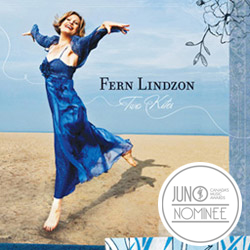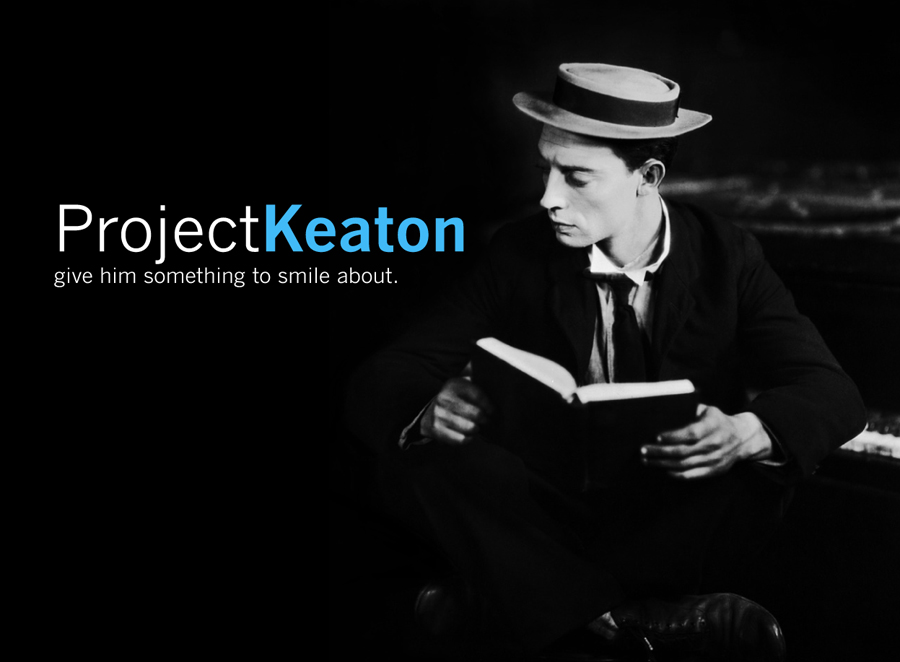by Alayne McGregor, Ottawa Jazz Scene, March 31, 2012
Juno nominee Fern Lindzon: “whatever inspires”
This weekend, the Junos come to Ottawa. While the pop and rock acts are what you’ve heard most about in the media and in the clubs, there are also several categories in which jazz artists have been nominated.
One of the nominees for Vocal Jazz Album of 2012 is Toronto jazz musician Fern Lindzon. OttawaJazzScene.ca talked to Lindzon last week about her background, the album, and what it was like to be nominated for her first Juno.
On the Juno website, Lindzon is described as a “pianist and singer” – which is an interesting and illuminating distinction, once you listen to her nominated album, Two Kites. On the album, Lindzon has not only included some major Toronto jazz talent – drummer Nick Fraser, bassist George Koller, and saxophonist Mike Murley – and left them plenty of space to stretch out, but her piano playing is as much featured as her voice. There’s a bit of free improv included, too.
”It’s always been a debate with me: should I call myself a vocalist/pianist or a pianist/vocalist? I don’t know, because they’re both pretty equal. I really see myself as both.”
In terms of time practicing, she said, “I’ve always put piano first”. However, since the Juno nomination, she said she’d been wondering if she “should put vocals first since I was nominated as a vocalist.”
But she said she didn’t think of Two Kites as a vocal album. “One of the reasons I was so surprised [at the nomination] is that I didn’t think of it as a typical vocal jazz record, because I really think of the vocals as part of the whole mix. It just so happens that I love to sing and I express myself vocally, but I feel the piano is really an equal part. And then when you’re working with people like Nick and George and Mike, I really feel it very much a band effort.”
“Some people are surprised that I’m very happy to do a few instrumentals. I’ll throw in some significant instrumentals. Even on this record, there’s one track that’s completely an instrumental, and then there’s another track where I sing maybe a minute and a half, and then there’s eight minutes of instrumental. Maybe people know that already about me, so they’re not necessarily expecting me to just stand up and sing – although I love to do that, too. But I really enjoy just sitting and playing.”
Two Kites is Lindzon’s second album, after Moments Like These in 2008. Its tracks include originals inspired by jazz classics, Brazilian jazz, some Klezmer-influenced music, a few standards, and a piece by singer Norma Winstone and pianist Glauco Venier. The title song is by Brazilian composer Antonio Carlos Jobim, whom Lindzon has loved for many years, and whose album, Jobim, she listened to when she had her daughter.
“I think you can get the repertoire from whatever inspires”
The diversity of the album reflects Lindzon’s own diversity of background and influences.
She started out as a musicology major at the University of Toronto, “playing classical piano and doing some classical singing as well. “Around my third year was when I accidentally stumbled into a jazz club. I had no idea what jazz was. I had no idea that this music even existed.”
There she encountered musicians like jazz guitarist Lorne Lofsky and she realized, “This is what I want to be doing!”
”And then I heard my first Bill Evans record and that clinched the deal for me.” She finished her degree, travelled for a year, and then came back and started all over again just playing jazz.
Lindzon’s major influences include pianists like Evans and Fred Hersch, who is “one of my heroes”. When she saw Winstone and Hersch play together in Toronto in November of 2010, “I sat there with tears in my eyes for half of the concert and beaming my head off for the other half.”
But Winstone has been an even bigger influence: “She’s just a complete musician. I’ve listened to Norma a lot. First of all, her sound is just a beautiful human sound. There’s nothing pretentious about what Norma’s doing. And she’s right in there: she’s an instrumentalist as far as I’m concerned who just happens to be a singer. And I think most jazz musicians think of her as an instrument.”
Winstone’s notable work as a lyricist has influenced Lindzon to write her own lyrics to jazz pieces: for example, to Wayne Shorter’s “Infant Eyes”, which she included on her first album, after getting permission from Shorter through his wife. “She said they’re beautiful and cc’d the publisher, and it was easy,” which Lindzon said was often not the case with obtaining copyright permission, particularly if the musician has died.
”For example, I wrote lyrics to another favourite piano player of mine, Wynton Kelly: I wrote lyrics to his piano solo on Kind of Blue for “Freddie the Freeloader”. And I couldn’t get permission to record that [from the Miles Davis estate, which owns the rights]. The only way I could do that is if I really changed the melody.”
Exploring klezmer in a contemporary jazz way
Several of the pieces on Two Kites are also influenced by Lindzon’s experience with klezmer, starting with her work as music director of the klezmer-swing Sisters of Sheynville for five years. Although she is Jewish, she never learned Yiddish or was introduced to any Yiddish music when growing up. “My mother and my grandmother spoke Yiddish amongst themselves as a way of secretly communicating with each other.”
”Through [the Sisters of Sheynville] I ended up going to a place called KlezCanada, which is up in the Laurentians and takes place the last week of August every summer and it is an unbelievable place. And I remember sitting at my very first faculty concert and there was an accordionist who also happens to be an incredible piano player named Alan Bern playing with a guy named Christian David on clarinet and they did this totally improvised piece that was based on a Yiddish melody. I was listening to that and I had just chills up my entire spine. I thought, ‘This is incredible stuff, to be able to take this repertoire and be able to put it into a contemporary jazz [idiom].’ I could just see how it could be really explored in a contemporary jazz way.”
I think you can get the repertoire from whatever inspires. Then the intention is always to change the chords or to do something that will involve improvisation and putting it into more of a jazz language.”
The two Yiddish pieces on Two Kites actually end up sounding more like art songs. “‘Dona Dona’ is definitely an art song,” Lindzon said, with an arrangement inspired by Maria Schneider’s “Hang-gliding”. “My gateway into that was a classical piece written by Nikolai Medtner called “Forgotten Melodies” and it reminded me of the melody of “Dona Dona” and I thought ‘This is an interesting way for me to incorporate classical into the Yiddish’.”
Long-time musical associations
Well before recording Two Kites, Lindzon had known and played with the other three musicians for many years.
Koller also produced the album, and is Lindzon’s “go-to guy. I talk to him about arrangements. I throw ideas by him. And he’s so open and such a beautiful, beautiful supportive player.”
Murley she had been listening to for many years, but she started playing with him about five years ago. “When I listen to tracks like “Dona Dona”, or when I’m playing that live with him, he just throws in these notes every so often that are “Omigod, how did you find that? Where did that come from?” And he’ll do these simple – when you analyze it, it’s not really complicated – but it’s where he throws things in, how he throws them in, and the actual note that he’s playing – it just lifts everything up.”
Fraser she met as she was getting more interested in Toronto’s free jazz and free improvised scene. “I love to spend time participating in playing free music as well. In fact, I really feel that playing free has helped my jazz playing a lot and changed the way that I think about music. But I’d started to listen to Nick in those kinds of situations and I was just blown away by his playing. And then I heard him in other situations and …”
”So I started playing with Nick maybe four or five years ago. Nick is incredible. He is one of the most amazing musicians on any instrument I have ever met in my life. And he’s so dedicated and he’s always practicing. He’ll bring a practice pad to your recording session. He’s just crazy: he’s so knowledgeable about so much I’m still amazed listening to him. When I listen to the record, I’m listening to Nick. When I hear what he does on something like “Two Kites”, where it’s got this relaxed ‘it just goes’, and yet underneath it he’s got this whirlwind of activity going on. But it’s not distracting and he doesn’t draw attention to it and yet the groove is so strong.”
On the album, there is a free jazz influence in a Yiddish-influenced medley called “Yam Lid”. “We start getting a little bit free with the Balkan [Bellabusta section]. We keep this groove going on but there’s not any kind of harmonic changes.”
An elegant solution from Joel Kerr
Montreal bassist Joel Kerr (who is in the Ottawa-based Craig Pedersen Quartet) also gets thanked in the album, because he solved a problem with Lindzon’s arrangement of “Dona Dona” while they were both attending KlezCanada. Lindzon had modulated from A minor to B flat minor, and wanted to modulate back to A minor to end the piece, but couldn’t find an elegant solution. He suggested going down (rather than up) a whole-tone scale, which solved her problem. And that also created an interesting contrast, she said, between the lyrics, which talk about learning to fly, and the music that’s actually going down. “It’s a really, really interesting tune in terms of the drama and in terms of the ambivalence.”
”I like finding material that isn’t straight-forward in terms of what it … there’s some thing ambivalent in what it’s saying. Things are not necessarily what they appear to be.”
Thrilled, after being on pins and needles
Lindzon said she first got hints that she might be nominated for a Juno about a week before the announcement, but the message – even when she was invited to the press conference – was always “This in no way indicates a nomination.”
She was thrilled when the nomination was finally confirmed, “once I actually went through the whole week of being what they say in Yiddish, being on shpilkes which means on pins and needles.”
The winner in her category – in fact, for 34 of the 41 Juno awards – will actually be announced on Saturday night (March 31), not at the public televised gala on Sunday at Scotiabank Place. But she was happy at the nomination in itself: “I just want to say thank-you to whoever the jury [for my category] is. I was just thrilled with whoever happens to have listened … This really indicates that they actually do listen to the records that are submitted.”
 by Paul J. Youngman,
by Paul J. Youngman, 


